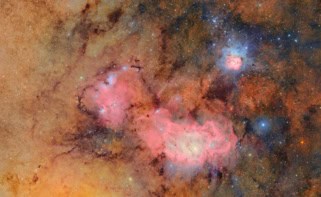
An international team of researchers have developed a new type of gyroscope that is the first to measure the “wobble” in the rotational axis of the Earth from a ground-based laboratory. Astronomers normally track this wobble by continuously monitoring the position of distant objects, such as quasars. But this new method will provide a much simpler and cheaper alternative to these large-scale astronomical readings, the scientists claim.
The International Association of Geodesy, which was involved in this effort, maintains the terrestrial and celestial reference frames, which form an essential basis for navigation and the study of the Earth. The terrestrial reference frame is relevant to an observer on the Earth’s surface. For example, it describes why the Sun appears to be rising and setting every day, when we know that it is the Earth itself that rotates. The celestial reference frame – based at the centre of the solar system – is calculated using 212 distant astronomical bodies such as quasars and is used to determine the position of all the planets including the Earth.
Distant markers
The precise knowledge of Earth’s rotation and the orientation of the rotational axis as a function of time is necessary to link the two reference frames with sufficient accuracy. For many decades now, this has been done using radio telescope observations, based on a technique known as Very Long Baseline Interferometry (VLBI). Unfortunately, this is an expensive and a highly involved approach, spanning stations across the entire Earth, and until today this system cannot be operated continuously. Without the precise knowledge of the length of day and the orientation of the Earth, it is impossible to establish local positions from the Global Navigation Satellite Systems (GNSS) accurately enough.
Wobbling world
Tracking this orientation is complicated by the fact that the Earth wobbles about its axis. Both the Chandler and the annual wobble are small irregularities in the position of the Earth’s geographic poles and hence a shift in its rotational axis. The annual wobble is due to a small change in tilt as a result of the gravitational attraction due to the slight ellipticity of the Earth’s orbit. The Chandler wobble is a 435 day oscillation of the Earth’s axis attributed to factors such as ocean floor pressure variation and wind. Since the Chandler signal is particularly unpredictable, it is necessary to measure and keep track of it.
Now, Ulrich Schreiber at the Technical University of Munich and colleagues have used ring lasers – which have been used for aircraft guidance for many years now – and increased their sensitivity and stability over several orders of magnitude in order to make them suitable for monitoring the long-period changes in the Earth’s axis such as the Chandler wobble.
The ring
A ring laser uses two single-mode laser beams that propagate around a closed laser cavity in opposing directions. If a ring laser is rotating, the two opposing waves are slightly shifted in frequency and a beat interference pattern is observed, which is proportional to the rate of rotation. Since the sensor is rigidly attached to the Earth, it becomes capable of sensing small variations in the Earth’s rotational speed and the direction of the axis of rotation. “Our G-ring is orientated horizontally. If we would place it on the equator, we would see nothing – the projection vanishes – and on the pole the signal would be maximal, but polar motion would vanish,” says Schreiber.
The team designed a vastly upscale version of an aircraft ring laser. “The commercial devices are approximately 10 cm on a side, ours is 4 m on a side,” explains Schreiber. The device is placed in a temperature stabilized vault so that signals with a frequency as low as 25 nHz can be extracted. The mirror-making technology also needed to make a large leap forward for the gyroscope to work and Schreiber explains that their ring is capable of running constantly. Their device was made out of zerodur – a ceramic glass with very low thermal expansion.
Sense and stability
Thanks to the sensitivity and stability of large ring laser gyroscope, the team were able to directly measure the combined effect of the Chandler and the annual wobble of the freely rotating Earth. Their measured data was in excellent agreement with the independent measurements by using the astronomical method.
When compared to the tried and tested VLBI method, Schreiber says that it is still early days for their method. “We are still about a factor of five short of the VLBI performance and we still would need to reduce the sensor drift further. However, when we first proposed ring lasers for this purpose in the mid-nineties, all the reviewers flagged us away – the argument being that we cannot possibly reduce the drift over several orders of magnitude and that about six orders of magnitude gain in sensitivity was unrealistic,” says an enthusiastic Schreiber, suggesting that further developments will be made in the days to come.
The research is described in Physical Review Letters.



